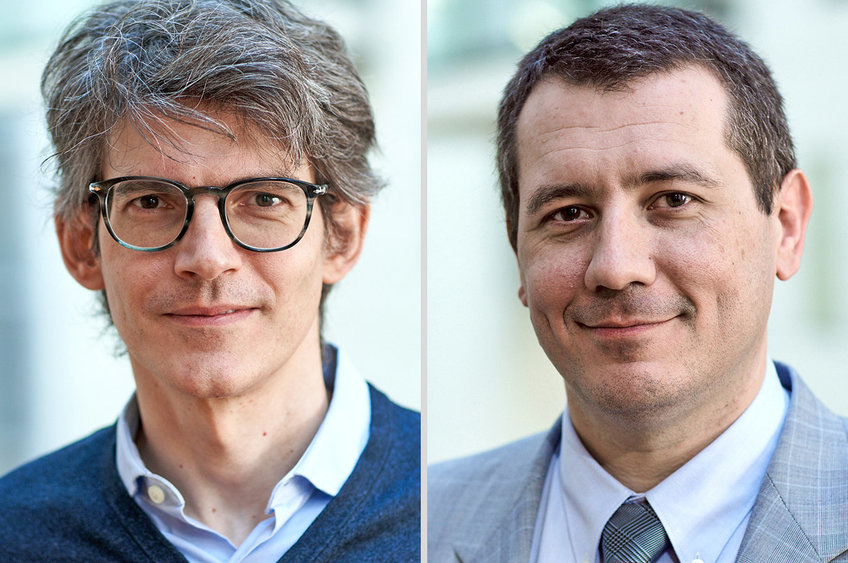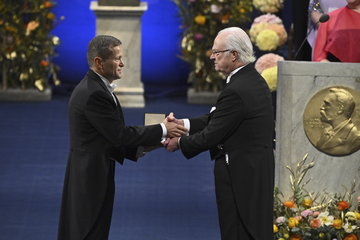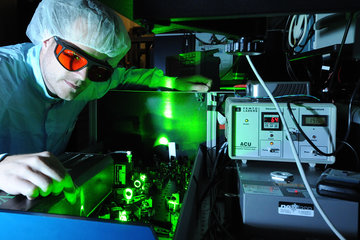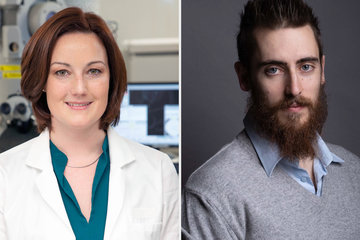Max Planck-Humboldt Research Award 2020 presented in life sciences for the first time
Roberto Bonasio is awarded the Max Planck Humboldt-Research Award 2020, Luciano Marraffini receives the Max Planck-Humboldt Medal
Molecular biologist Roberto Bonasio from the University of Pennsylvania will be honoured for his outstanding research in the field of epigenetics with the Max Planck-Humboldt Research Award, which is endowed with 1.5 million euros. Bonasio's studies on ants show how the epigenetic regulation of genes can influence the behaviour and appearance of individuals. Connected to the prize is a research project in collaboration with the University of Freiburg, during which he intends to investigate how the brain of the ant queen differs from that of worker ants. Luciano Marraffini from Rockefeller University in New York and the Howard Hughes Medical Institute is receiving the Max Planck-Humboldt Medal for his achievements in the research of the molecular gene scissors CRISPR/Cas. Instead of the originally planned award ceremony during the Berlin Science Week, awardee Roberto Bonasio will offer insights into his research project in a "Meet the Prizewinner" livestream event on November 4 from 6:00 p.m. CET – 18:00 (German time - Berlin) http://mpg.de/mphfplivestream.

”We have established the Max Planck-Humboldt Research Award as an effective tool for strengthening science and research in Germany. Roberto Bonasio’s research project is a fascinating and vivid example of basic research. I am therefore delighted that he will continue his research with neuroscientists and epigeneticists in Freiburg,” says Federal Research Minister Anja Karliczek. “Our award winners are making a decisive contribution to international scientific exchange today, in a world in which impartiality and cohesion must be maintained time and again," says Hans-Christian Pape, President of the Alexander von Humboldt Foundation. "Roberto Bonasio and Luciano Marraffini are top scientists in the field of the life sciences who have successfully passed a multi-stage, competitive selection process of the Alexander von Humboldt Foundation and the Max Planck Society," adds Max Planck President Martin Stratmann.
From worker to queen
In an ant colony, there is great diversity. Queen, soldiers, and workers form different castes and can vary greatly in appearance and behaviour – even though all individuals have the same genes. It is therefore not the genes themselves that cause the differences, but their regulation, likely via so-called epigenetic marks in the genome. These control the activity of genes, thus playing a central role in the development of different behaviours and appearances.
Ants are therefore ideal targets for research into epigenetic pathways in the brain. Roberto Bonasio has decoded the genome of the ant species Harpegnathos saltator with a great degree of accuracy. The species has since developed into a model organism that enables researchers to investigate the effects of epigenetic changes.

Adult Harpegnathos saltator workers have the rare ability among ants to transform themselves into so-called pseudo-queens. In the research project connected with the Max Planck-Humboldt Research Award, Roberto Bonasio, together with scientists from the University Hospital of Freiburg, wants to investigate the restructuring of the brain in ant individuals alternating between worker and queen status.
Harpegnathos saltator occurs in India and grows to a length of two to three centimetres. The animals live in small colonies with a queen that does not look very different from the other members of the colony, but behaves profoundly different. Adult Harpegnathos workers have the rare ability among ants to transform themselves into so-called pseudo-queens. They then behave like real queens, lay eggs and have an extended lifespan compared to workers. Bonasio and his team can artificially trigger this transformation in the laboratory and thus analyse the changes in the animals' gene activity.
In this way, the researchers can study the epigenetic marks, transcription factors – proteins that control the activity of genes – and neural messengers that are responsible for this change of caste. They have identified hundreds of genes that change their activity in the animals' brains when workers are transformed into pseudo-queens. In particular, the gene for corazonin, a peptide consisting of a few amino acids, is particularly active in the brains of workers. In a series of sophisticated experiments, Bonasio and his team have shown that this gene is responsible for different behaviours of the workers, for example hunting and food procurement for the queen.
From Pennsylvania to Freiburg
For these and other important discoveries and for his merits in the development of new research methods, Roberto Bonasio is awarded the Max Planck-Humboldt Research Award, which honours particularly innovative researchers abroad. Bonasio grew up in Sesto Calende, on the Lake Maggiore and initially studied biotechnology in Milan. After stations at Harvard and New York University, he has been heading his own laboratory at the University of Pennsylvania Perelman School of Medicine since 2014.
The award also includes funds for a research collaboration with the University of Freiburg, and the establishment of his own laboratory at the University Freiburg Medical Center (UKF). Together with neuroscientists from Freiburg around the neuropathologist Marco Prinz (UKF) and the epigeneticist Marc Timmers (UKF/DKTK), Bonasio plans to investigate the restructuring of the brain in ant individuals alternating between worker and queen status. It is precisely this brain plasticity that makes the approach so promising for applications in humans. The findings on the epigenetic control of these changes in the brain might also be relevant for neurological diseases, such as Alzheimer's.
World-leading CRISPR/Cas expert
This year’s Max Planck-Humboldt Medal goes to Luciano Marraffini. Originally from Argentina, the microbiologist has been in the faculty of Rockefeller University in New York since 2010 following research stays at the University of Chicago and the Northwestern University in Evanston. Luciano Marraffini is considered one of the world's leading CRISPR/Cas experts. His early work on this bacterial defense system paved the way for today's broad application of CRISPR/Cas as a molecular tool for DNA modification. For example, he discovered that CRISPR does not cut RNA molecules as previously thought, but DNA. In this way, viruses are rendered harmless and a permanent immunity is formed. He also discovered how bacteria select the sections of the viral genome that they incorporate into their own genome and how they prevent the CRISPR system from self-targeting.
He recognized the great potential of his discovery early on. In doing so, he made a significant contribution to making CRISPR/Cas usable for the targeted modification of DNA. Marraffini and his team are now investigating how the defence system works in archaea – a group of microorganisms that are similar to bacteria in many aspects, but very far apart in the evolutionary tree. The Max Planck Society and the Alexander von Humboldt Foundation are awarding him with the Max Planck-Humboldt Medal in recognition of his extraordinary achievements.
About the award
Since 2018, the Max Planck Society and the Alexander von Humboldt Foundation award the redesigned Max Planck-Humboldt Research Award to a researcher from outside Germany. The award is endowed with 1.5 million euros. It is intended to attract outstanding and particularly innovative international scientists to German universities and research institutions for a limited stay. The award winner also receives an additional sum of 80,000 euros as personal prize money. The award is funded by the Federal Ministry for Education and Research.
Awards will alternate between the natural and engineering sciences, human sciences, and life sciences. In addition, two other nominees can be awarded with the Max Planck-Humboldt Medal, which is endowed with 60,000 euros.
HR/PM













